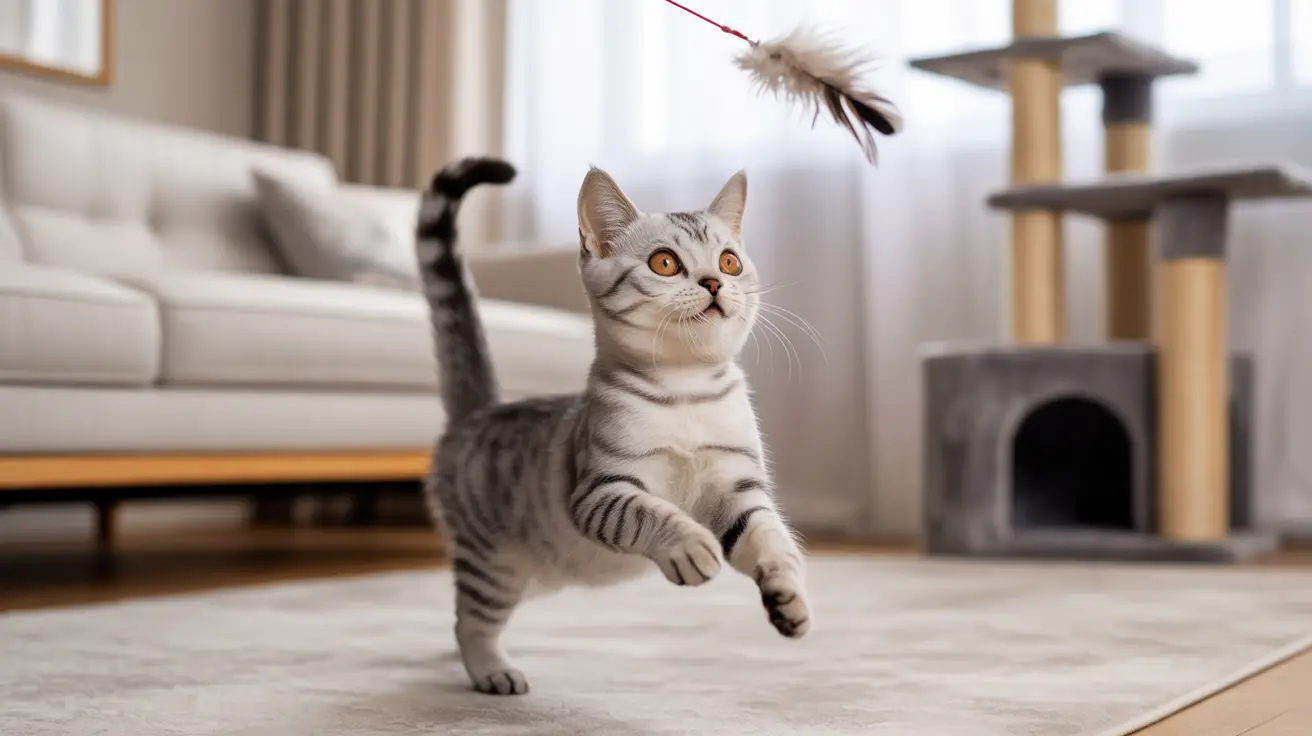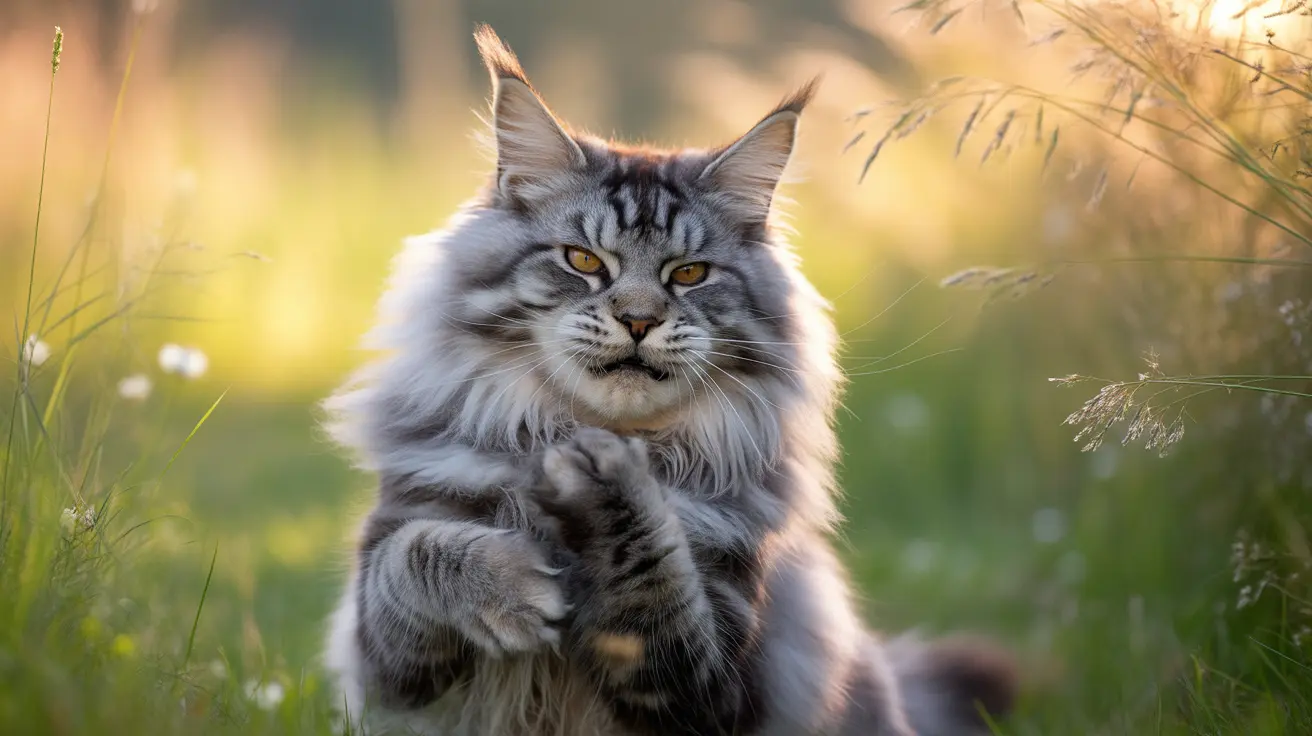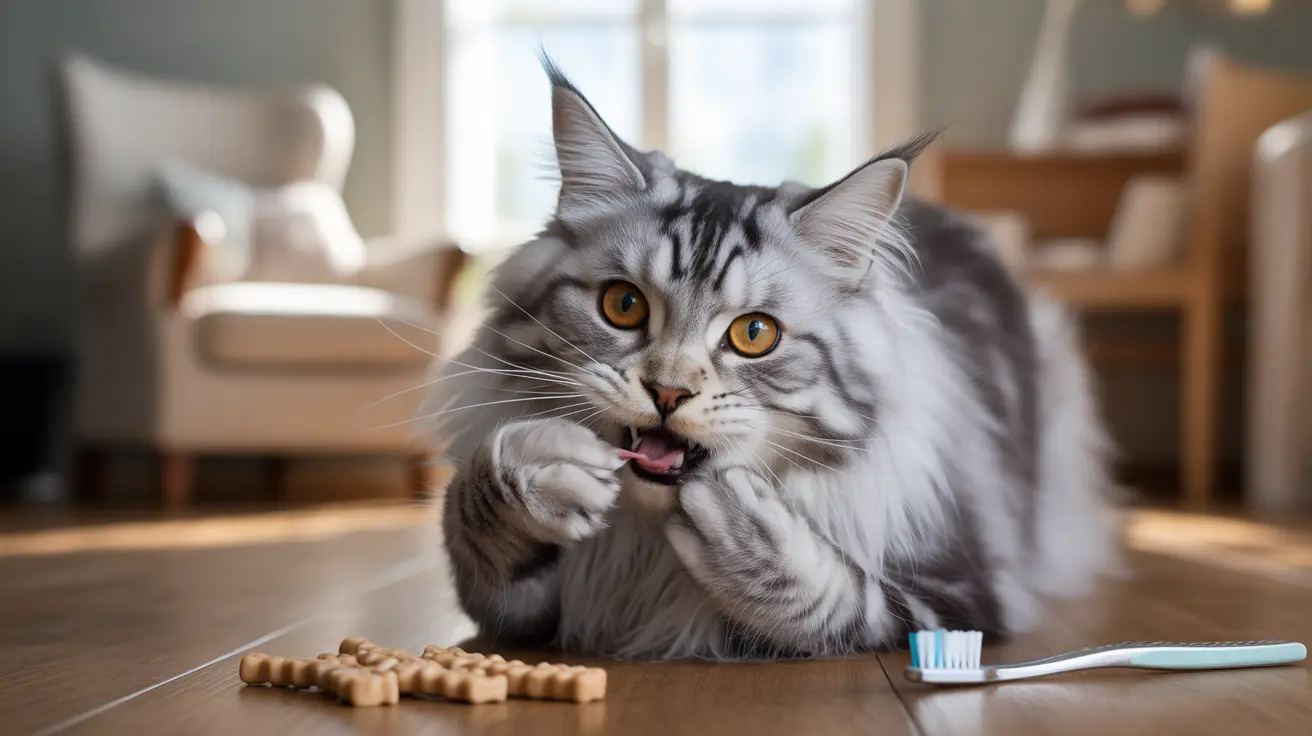Singapura Cat Care Guide: Everything You Need to Know About the World's Smallest Cat Breed
The Singapura cat, affectionately known as Kucinta in Singapore, holds the remarkable distinction of being the world's smallest domestic cat breed. With their distinctive large eyes, prominent ears, and uniquely ticked coat, these petite felines have captured the hearts of cat enthusiasts worldwide. Weighing between 1.8 to 2.7 kilograms (4 to 6 pounds), Singapuras pack enormous personality into their compact frames, making them ideal companions for those seeking an affectionate and engaging pet.
Despite their diminutive size, Singapura cats are known for their extroverted, curious, and highly interactive nature. They form strong bonds with their human companions and thrive on attention and engagement. Whether you're considering adopting a Singapura or already share your home with one of these remarkable cats, understanding their unique care requirements, temperament, and characteristics is essential for providing the best possible life for your feline friend.
This comprehensive Singapura cat care guide will explore everything from their controversial origins and distinctive physical traits to their specific care needs, health considerations, and ideal living environments. By the end of this article, you'll have the knowledge needed to ensure your Singapura cat lives a happy, healthy, and fulfilling life.
The Fascinating Origins and History of the Singapura Breed
The Singapura breed's history is shrouded in controversy and debate, making it one of the most intriguing origin stories in the cat world. In 1975, American breeders Tommy and Hal Meadow returned to the United States with three local brown-ticked cats from Singapore, originally known as "drain cats." These three foundation cats would become the cornerstone of the entire Singapura breed we know today.
The breed name itself derives from the Malay name for Singapore, reflecting its supposed Southeast Asian heritage. The International Cat Association (TICA) recognized the Singapura in 1979, followed by the Cat Fanciers' Association (CFA) in 1982, with the breed achieving championship status in 1988. However, the breed's recognition came with significant controversy that continues to spark debate among cat enthusiasts and geneticists.
The Origin Controversy
In the 1980s, investigations revealed that the foundation cats were originally brought to Singapore from the United States before being exported back to the US. This discovery led to speculation that the Singapura might actually be a hybrid of Burmese and Abyssinian cats rather than a naturally occurring breed. Despite these revelations, the CFA's investigation found no evidence of wrongdoing, and the breed maintained its status as a natural breed.
Recent DNA studies have further complicated the narrative by showing minimal genetic differences between Singapura and Burmese breeds. This genetic similarity has fueled ongoing discussions about the breed's natural status and raises questions about whether the Singapura truly originated in Singapore or was selectively developed in the United States.
Physical Characteristics: Understanding the Singapura's Unique Appearance
The Singapura's most striking feature is undoubtedly its size – or lack thereof. Females typically weigh around 1.8 kilograms (4 pounds), while males reach approximately 2.7 kilograms (6 pounds), making them the smallest recognized domestic cat breed. Despite their petite stature, Singapuras are moderately stocky and muscular, giving them a sturdy appearance that belies their delicate size.
Their coat is exceptionally short and fine, featuring a distinctive ticked tabby pattern with sepia agouti coloration. This unique coloring consists of dark brown ticking on a warm old ivory base, creating a beautiful gradient effect throughout their fur. The facial markings are particularly striking, including dark lines around the eyes known as "cheetah lines" and a characteristic dark "M" pattern on the forehead.
Distinctive Features
Singapuras possess several distinctive physical characteristics that set them apart from other breeds. Their large, deep-cupped ears are prominently set on their heads, while their large almond-shaped eyes create an alert and engaging expression. The tail is slender and slightly shorter than the body length, ending in a distinctive blunt tip that adds to their unique silhouette.
These physical traits combine to create a cat that appears eternally youthful and kitten-like, even well into adulthood. Their compact size and distinctive coloring make them instantly recognizable among cat breeds, contributing to their growing popularity among pet owners seeking something truly special.
Temperament and Personality: The Singapura's Engaging Nature
The Singapura's personality is perhaps their most endearing quality. These cats are known for being extroverted, curious, playful, and remarkably intelligent. They actively seek interaction and affection from their human companions, often following their owners throughout the house and involving themselves in daily activities. This behavior has earned them a reputation as "velcro cats" due to their tendency to stick close to their favorite humans.
Despite their small size, Singapuras maintain high energy levels well into adulthood, making them excellent companions for active households. They are relatively quiet cats but can vocalize loudly when they want attention or have something important to communicate. Their intelligence makes them highly trainable, and many owners report success in teaching their Singapuras various tricks and commands.
Social Behavior and Interaction
Singapuras generally do well as family pets, particularly in calmer households with children who can respect the cat's space and boundaries. They tend to be initially cautious around strangers but usually warm up once they feel comfortable in the situation. Some Singapuras may exhibit a somewhat stubborn streak, though this is generally balanced by their eagerness to please their human companions.
These cats typically get along well with other pets, including dogs, and with children when proper supervision is provided. However, they prefer company and can develop separation anxiety if left alone for prolonged periods. For this reason, many experts recommend having another cat companion to help prevent loneliness and provide social interaction when humans are away.
Creating the Perfect Living Environment for Your Singapura
Singapura cats are well-suited to apartment living, provided their environment is thoughtfully designed to meet their physical and mental stimulation needs. These active and curious cats benefit greatly from environments that offer climbing opportunities and vertical spaces. Cat trees, shelving systems, and other vertical elements are essential for allowing Singapuras to exercise their natural climbing instincts and survey their territory from elevated positions.
Secure outdoor access, such as enclosed catios or screened porches, can provide excellent enrichment for Singapuras while keeping them safe from outdoor dangers. These spaces allow them to experience fresh air, observe wildlife, and enjoy natural sunlight while remaining protected. If outdoor access isn't possible, large windows with comfortable perches can provide similar environmental enrichment.
Indoor Enrichment Essentials
Creating a stimulating indoor environment requires attention to several key elements. Provide ample climbing structures, interactive toys, and cozy resting places throughout your home. Singapuras tend to dislike loud noises and can be sensitive to abrupt changes in their environment, so maintain a relatively calm and predictable household routine when possible.
Puzzle feeders, interactive toys, and regular play sessions are crucial for keeping these intelligent cats mentally stimulated. Rotating toys regularly helps maintain their interest and prevents boredom. Additionally, providing multiple comfortable resting spots at various heights allows Singapuras to choose their preferred locations for relaxation and observation.
Health Considerations and Genetic Factors
While Singapuras are generally healthy cats, they are prone to certain breed-specific health issues that owners should be aware of. One significant concern is uterine inertia, a reproductive issue that causes difficulty in delivering kittens and often requires cesarean sections. This condition affects breeding cats and is something that reputable breeders actively monitor and manage.
Another important health consideration is pyruvate kinase deficiency (PKD), a genetic condition that causes anemia and related symptoms such as lethargy and jaundice. Genetic testing is available to identify affected cats or carriers, and responsible breeders use these tests to make informed breeding decisions. Regular veterinary checkups and monitoring for symptoms of these conditions are essential for maintaining your Singapura's health.
Genetic Diversity Concerns
Singapuras have one of the lowest genetic diversities among cat breeds, largely due to inbreeding within their small gene pool. This limited genetic diversity can increase the risk of inherited health problems and has led to ongoing debates about outcrossing programs. Some organizations, including the UK's Governing Council of the Cat Fancy, have recently authorized outcrossing to help increase genetic diversity within the breed.
Working with reputable breeders who conduct genetic testing and prioritize health over appearance is crucial when selecting a Singapura kitten. These breeders can provide health certificates and genetic testing results for both parents, helping ensure you're getting a healthy cat with the best possible genetic foundation.
Nutrition and Feeding Requirements
Singapuras thrive on high-quality, protein-rich diets that support their active lifestyle and small but muscular build. Many nutrition experts recommend dry foods containing 30% or more protein and 18% or more fat for these energetic cats. The high protein content supports their muscle development and maintenance, while adequate fat levels provide the energy they need for their active lifestyles.
Fresh water should always be available, and many Singapuras prefer moving water sources such as pet fountains. Due to their small size, portion control is important to prevent obesity, which can be particularly problematic for such tiny cats. Dividing their daily food allocation into multiple small meals throughout the day can help maintain steady energy levels and prevent overeating.
Special Dietary Considerations
Given their high energy levels and active nature, Singapuras may require more calories per pound of body weight compared to larger, less active breeds. However, their small stomach capacity means they do best with frequent, smaller meals rather than one or two large feedings per day. Monitor your Singapura's body condition regularly and adjust feeding amounts based on their activity level, age, and overall health status.
Treats should be given in moderation and should constitute no more than 10% of their daily caloric intake. High-quality, protein-based treats are preferable to those high in carbohydrates or artificial additives. Always consult with your veterinarian about the best feeding schedule and dietary choices for your individual cat.
Grooming and Maintenance
One of the advantages of owning a Singapura is their minimal grooming requirements. Their short, fine coat requires only occasional brushing – typically a weekly comb-through is sufficient to manage shedding and maintain coat health. This grooming routine also provides an excellent opportunity to bond with your cat and check for any skin issues, lumps, or other health concerns.
Regular dental care is crucial for Singapuras, as with all cats. Daily tooth brushing is ideal, though weekly brushing is the minimum recommendation. Dental treats and toys can help supplement your dental care routine, but they shouldn't replace regular brushing and professional dental cleanings as recommended by your veterinarian.
Additional Care Requirements
Nail trimming should be performed every 2-3 weeks to keep claws healthy and prevent damage to furniture and skin during play. Providing appropriate scratching posts and surfaces is essential for nail health and territorial marking behaviors. Regular vaccinations and parasite prevention are important components of preventive healthcare for all cats, including Singapuras.
Keep up with routine veterinary examinations, which should include monitoring for breed-specific health issues. Early detection and intervention can significantly improve outcomes for many health conditions, making regular veterinary care an essential component of responsible Singapura ownership.
Socialization and Training Tips
Early and ongoing socialization is crucial for helping Singapuras develop confidence around strangers and in new environments. While they may initially be cautious around unfamiliar people, proper socialization can help them become more outgoing and adaptable. Gradual exposure to different people, sounds, and situations during kittenhood and continuing into adulthood helps build confidence and reduces anxiety.
Positive reinforcement training works exceptionally well with intelligent Singapuras. They can learn various commands, tricks, and even leash walking with patience and consistency. Start training sessions early and keep them short and enjoyable to maintain your cat's interest and engagement. Use high-value treats and plenty of praise to reward desired behaviors.
Building Confidence in Shy Singapuras
Some Singapuras may be naturally more reserved or cautious than others. For shy cats, create safe spaces where they can retreat when feeling overwhelmed. Allow them to approach new situations at their own pace without forcing interaction. Providing vertical hiding spots and escape routes helps build confidence by giving cats control over their interactions.
Interactive play sessions can help build confidence while strengthening the bond between you and your cat. Use wand toys and other interactive tools to encourage natural hunting behaviors and help your Singapura feel successful and confident in their abilities.
Multi-Pet Household Integration
Singapuras generally integrate well into multi-pet households when introductions are handled properly. Their social nature often makes them excellent companions for other cats, and many Singapuras actually prefer having feline companionship. When introducing a new Singapura to existing pets, follow gradual introduction protocols to ensure all animals feel safe and secure during the process.
These cats typically get along well with dogs, particularly those with calm temperaments. However, supervision is important during initial interactions, and all pets should have access to safe spaces where they can retreat if needed. The Singapura's small size makes them potentially vulnerable to overly enthusiastic play from larger pets, so monitoring interactions is crucial.
Successful Integration Strategies
Start introductions slowly, using scent swapping and visual contact before allowing direct interaction. Feed pets on opposite sides of a closed door to create positive associations with each other's presence. Gradually increase interaction time while supervising all encounters until you're confident all pets are comfortable together.
Provide separate resources for each pet, including food bowls, water dishes, litter boxes, and resting areas. This prevents competition and reduces stress during the integration period. Remember that full integration can take several weeks or even months, so patience is key to successful multi-pet households.
Frequently Asked Questions
How much space does a Singapura cat need?
Singapuras adapt well to apartment living and don't require large amounts of space. However, they do need vertical territory with climbing structures, cat trees, and elevated resting spots. A well-designed small space with adequate enrichment is better than a large empty space without stimulation.
Are Singapura cats good with children?
Yes, Singapuras generally do well with children, particularly in calmer households where children can respect the cat's space and boundaries. Their small size makes supervision important during interactions, especially with very young children who might not understand how to handle such a delicate cat properly.
How often should I groom my Singapura cat?
Singapuras require minimal grooming due to their short, fine coat. A weekly comb-through is typically sufficient to manage shedding and maintain coat health. This grooming session also provides an opportunity to bond with your cat and check for any health issues.
Do Singapuras suffer from separation anxiety?
Yes, Singapuras can develop separation anxiety if left alone for prolonged periods. They are highly social cats that prefer company, which is why many experts recommend having another cat companion to provide social interaction when humans are away from home.
What health problems are common in Singapura cats?
Singapuras can be prone to uterine inertia (affecting breeding females) and pyruvate kinase deficiency (PKD), which causes anemia. They also have low genetic diversity due to their small gene pool. Genetic testing is available for PKD, and working with reputable breeders who health test their breeding cats is important.
How active are Singapura cats?
Singapuras are highly active and energetic cats that maintain their playfulness well into adulthood. They require regular interactive play sessions, mental stimulation through puzzle toys and games, and environmental enrichment to keep them happy and healthy.
Can Singapuras live with other pets?
Yes, Singapuras typically get along well with other cats and even dogs when properly introduced. Their social nature often makes them excellent companions for other pets, though their small size requires supervision during interactions with larger animals to prevent accidental injury.
Conclusion
The Singapura cat represents a unique and rewarding companion for the right owner. Despite the ongoing debates about their origins, these remarkable cats have proven themselves to be engaging, affectionate, and adaptable pets that bring joy to countless households worldwide. Their small size, combined with their large personalities, makes them particularly well-suited to modern living situations where space may be limited but love is abundant.
Successfully caring for a Singapura requires understanding their specific needs for social interaction, mental stimulation, and proper healthcare. By providing appropriate environmental enrichment, regular veterinary care, and plenty of affection and attention, you can ensure your Singapura lives a long, healthy, and fulfilling life. Whether you're drawn to their distinctive appearance, engaging personality, or compact size, the Singapura cat care guide principles outlined here will help you provide the best possible life for these extraordinary feline companions.






